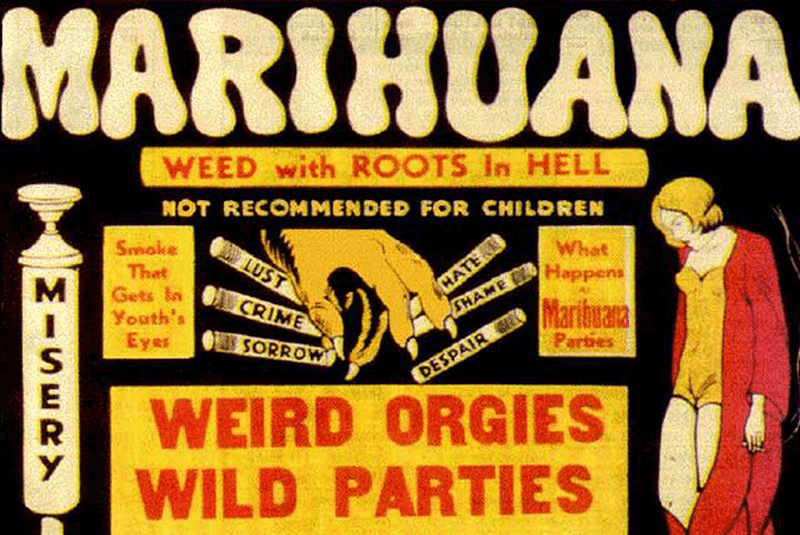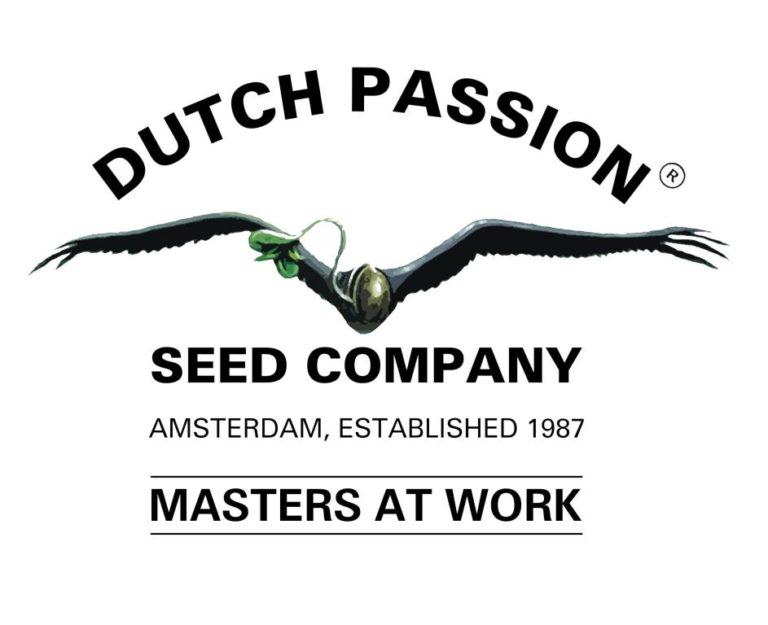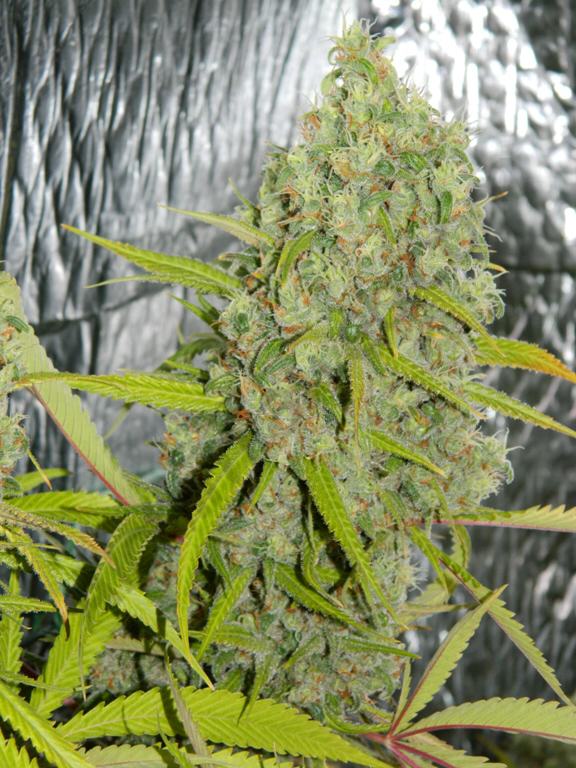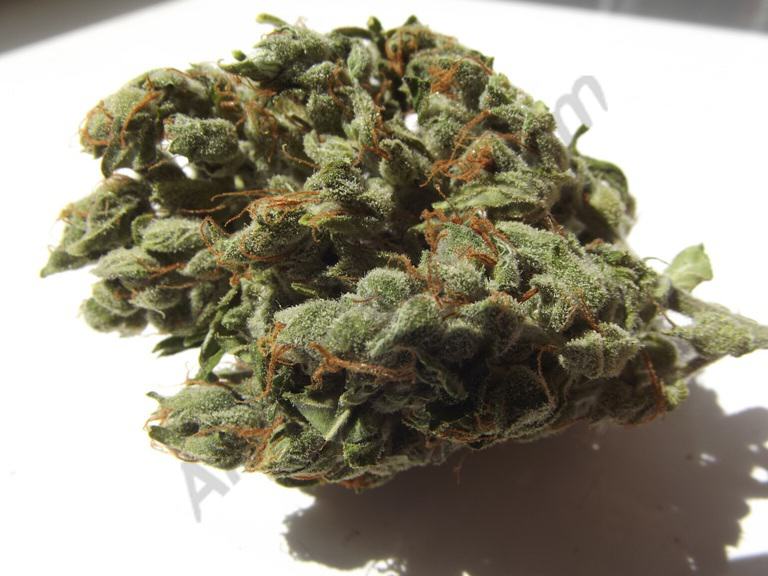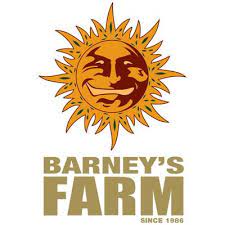Cannabis in the 80s, the Dutch revolution
List of contents
As we saw in our article on cannabis in the 1970s, the situation at the beginning of the 1980s had not changed much from the last years of the previous decade. Cannabis continued to be persecuted across most of the world thanks to the prohibitionist policies inherited from the previous decade, and both the cultivation and development of new varieties depended on the brave few who dared to defy the laws of their respective countries.
However, cannabis activism continued to fight harder than ever, and its consumption was, little by little, becoming more and more normalised in society and especially among artists, musicians and other people in show business. In addition, and thanks to the policies applied during the previous decade, a small European country, more specifically its most visited city, became the "world capital of cannabis" and Amsterdam appeared, for any stoner in the world, like a true paradise on Earth.
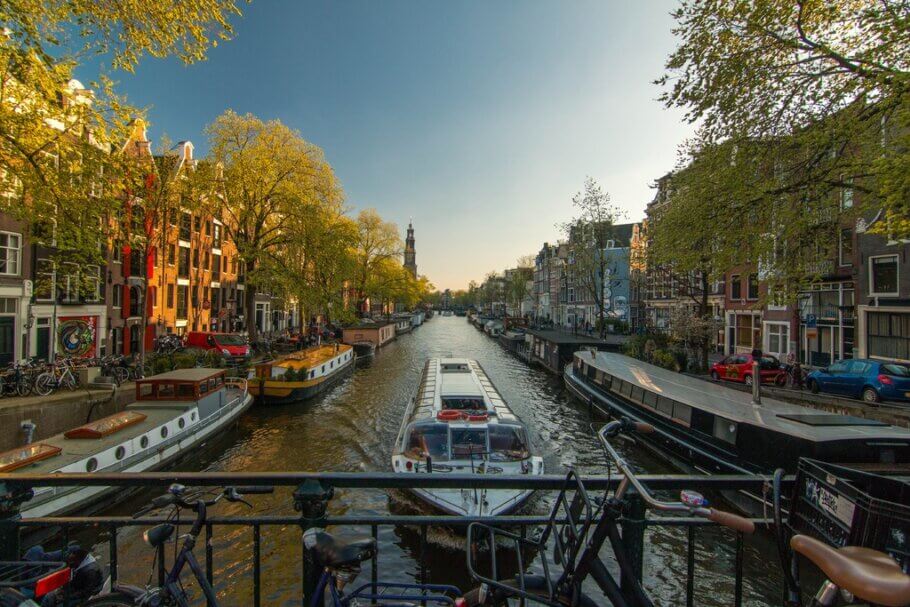
Ronald Reagan and cannabis. Out of the frying pan...
January 20, 1981. Ronald Reagan wins the elections and becomes the 40th President of the United States. Bad news for the cannabis community, very bad. Not surprisingly, not a year earlier, during the 1980 presidential campaign, Reagan had stated that marijuana was "probably the most dangerous drug in the country." And he said this just three or four years before his country began to experience a real scourge in terms of illegal drugs: crack. President Reagan was never going to make a living as a fortune teller, that much was certain.
But he did make a living - and did very well by the way - as a prohibitionist politician. Following Nixon's asinine drug strategy (if you can't beat your enemy then keep trying in the same way, banging your head against a wall), it didn't seem like anti-cannabis policies in the country were going to be relaxed under Reagan's mandate, nor in the rest of the countries where the US could exert a minimal influence in one way or another, which were not few.
History of cannabis prohibition
For centuries, cannabis has had a somewhat tumultuous relationship with the legislatures of different cultures. Although accepted in most places for hundreds of years, in the 19th century a trend towards the prohibition of this plant began to be observed, which led to the worldwide prohibition established during the 20th century. Today we will look at the main factors that led to this situation, its background, and how it was possible to displace cannabis in all its fields, from recreational to industrial or medicinal.
Holland enters the scene
However, in the Netherlands things were very different. And so it happened that apart from windmills, tulips and enormous sun-like Gouda cheeses, tourists were beginning to appreciate another of the wonders that these beautiful and flat lands offered... hashish and weed. At that time, for any Western tourist, the simple idea of ??sitting in a cafe where he could choose from a good number of different herbs and resins without any problems with the police simply sounded like a fairy tale.
This was possible thanks to Dutch authorities' gradual opening to the normalisation of cannabis use during the previous decade. Although coffee shops have existed since 1972 (Mellow Yellow was the first to open in the city), it wasn't until the 1980s that Amsterdam began to become a true cannabis tourist hot spot for many. And not only tourists, but also cannabis professionals.
Indeed, during this decade there were several American breeders and "professionals" (as well as companies like High Times) who saw in Holland a perfect (and never better said) fertile ground for their activities. One of them was a certain David Paul Watson, whom you may know as Sam the Skunkman. A member of the Sacred Seeds Collective, he is credited with bringing Skunk genetics to Europe during this time, as well as being responsible for creating what would have to be the commercial hybrid of the decade: Skunk #1.
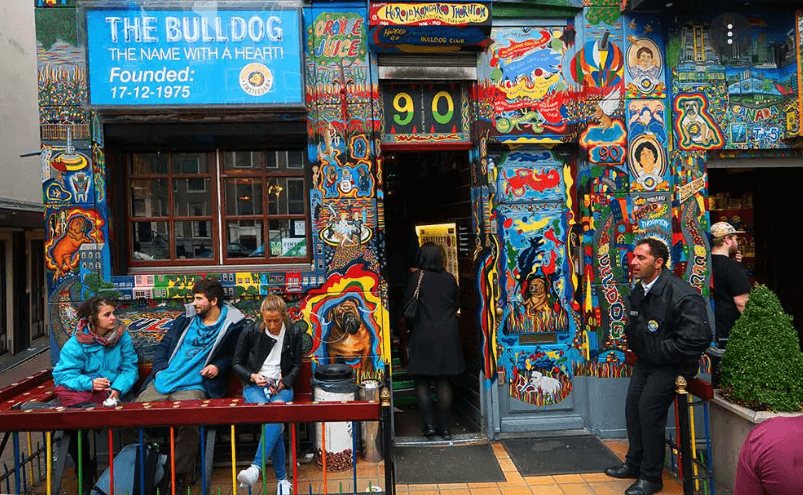
Development of new hybrids, the seed bank sector flourishes
The arrival of genetics such as Skunk, Haze or Northern Lights to European lands caused a stir in the Dutch cannabis scene, which until then had to settle for pieces of imported commercial hashish and the occasional bud of mediocre quality at best. cases. Of course, along with these new varieties also came knowledge about indoor cultivation, genetics and reproduction by cuttings, so soon the first hybrids developed in Holland could be seen in coffee shops, plants with much higher quality than the product they were accustomed to see in Amsterdam, both for their high potency and for their new aromas and flavours.
For example, in 1985 Ben Donkers founded "The Sensi Seed Club" thanks in part to having been one of the 3 Dutch growers to embrace Haze and Skunk genetics upon their arrival in Holland a few years earlier. After years of growing underground and producing interesting hybrids, Ben was finally able to pursue his passion professionally, laying the foundations for what would become Sensi Seeds in just a few years, after Ben took over The Seed Bank in 1991. We are indebted to them for seeds of genetics such as Northern Lights, Silver Haze or Big Bud, to mention just a few of them.
And speaking of The Seed Bank, which is usually considered the first proper cannabis seed bank in history... almost parallel to Ben, another Dutch grower stood out from the rest for the quality and potency of his hybrids, Neville Schoenmaker. Originally from the Seattle area, Northern Lights was a perfect indoor Indica that had earned a reputation as one of the best resin-producing strains of the time. Well, Neville was the first to bring the original clone (there were no seeds of this plant) to Holland and offer it in his own seed bank, The Seed Bank. It is assumed that the plant that Neville brought was the famous N.L. #5, with which he would go on to create another of the legends in the history of cannabis varieties: Neville's Haze.
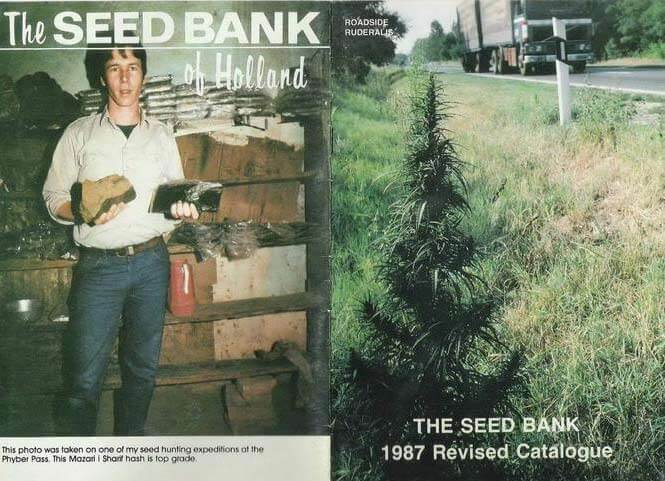
In 1987, another young cannabis entrepreneur named Henk van Dalen opened his own seed bank, the fruit of his passion for collecting seeds from everywhere and crossing them with each other. Dutch Passion had been born, one of the sector's biggest representatives of the Dutch industry and one that, after a few years, would pioneer a new and revolutionary technique that sounded like black magic to most people... feminised seeds! They brought us classics like Orange Bud, Durban Poison or Hollands Hope.
And also in 1987, another Dutch grower named Ingemar crossed a Brazilian sativa with an Indian plant from the Kerala region, giving rise to a variety that would revolutionise the scene for years to come... or should we say decades? Ingemar called this cross Arnhem's Wonder and won the 1989 edition of the High Times held in Amsterdam with it, although the name it was given after a few years will probably sound much more familiar to you... White Widow. In 1992, Arjan bought a male and a female (clones) and used them to create the White Widow offered by Green House Seeds in his catalogue.
And why was an American magazine holding cannabis cups in Amsterdam? Well, given the legal and political landscape in the United States, it wasn't only breeders who decided to cross the pond and settle in the Netherlands to carry out their activities without fear of being locked up. Events like High Times were also organised in the Netherlands due to the permissiveness that could be enjoyed there, so from 1988 Steven Hager (American writer, filmmaker, journalist and pro-cannabis activist) decided to celebrate this event in Europe. It was not until 2010 that the already famous cup was held for the first time in the US.
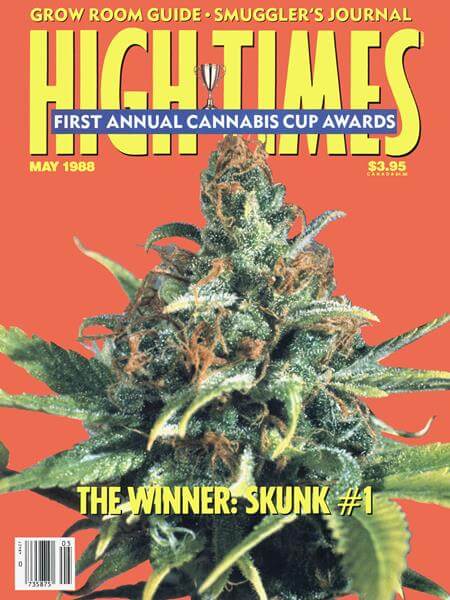
The rise in THC
All this activity brought with it a good number of new hybrids (we could call them polyhybrids), although in many cases they were no longer developed from landrace or pure varieties, but from the first hybrids that had been developed years before in American lands. And it was precisely this fact that made the average THC content of plants from the 1980s higher than those of plants from years before.
Selective breeding processes, such as those that began at that time, serve to fix traits in offspring such as high flower production, flavour and aroma, or THC content. Since normally only the most potent plants were used for breeding programs, this led to an increase in THC production from these new hybrids, plants that many of them were to become, in turn, future mainstays of breeding and the development of new varieties.
In addition, indoor cultivation (still in its infancy at that time compared with today) allowed mother plants to be kept for asexual reproduction of the different varieties, which allowed greater stability in the commercialised seeds. During the following decade, indoor cultivation would become the way to continue producing flowers and seeds without attracting the attention of neighbours and authorities, which allowed an even greater development of new genetics, techniques and technologies.
The social acceptance of cannabis in the 80s
Timidly, and despite the efforts of the authorities to present it as a gateway to other much more dangerous drugs, weed was gaining some acceptance at a social level, especially among certain groups and/or ideologies. The Netherlands itself became the most cited example by stoners around the globe to confirm that, indeed, a society can be mature, productive and responsible, and all this while consuming cannabis.
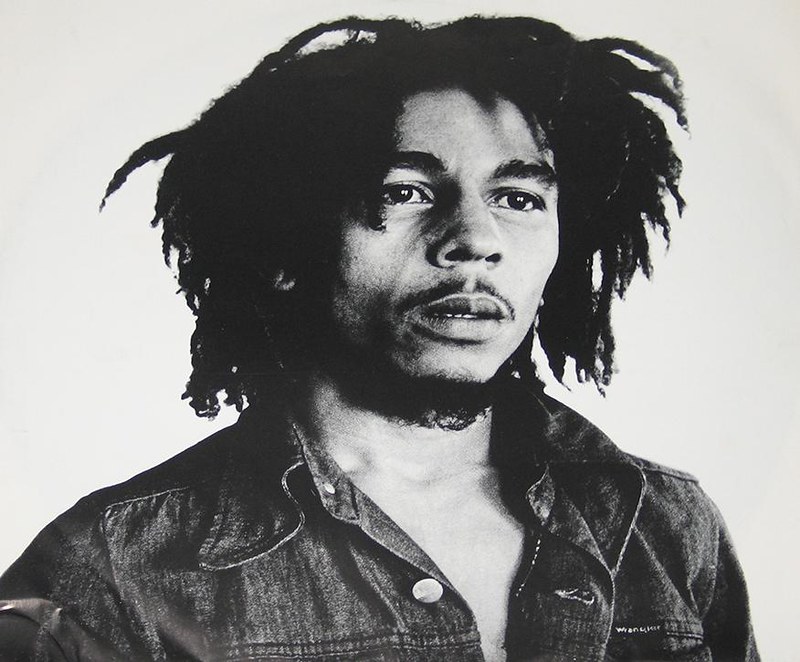
In addition, the popularisation of various countercultural movements such as skateboarding or graffiti did not exactly work against weed, and many artists and musicians came out of the cannabis closet with increasing frequency. Bob Marley (died 1981) popularised reggae music worldwide, and not only that; but also the love that this Jamaican artist professed for the plant. Cannabis was slowly permeating society, and musicians as disparate as the Beastie Boys or David Bowie attested to this in their lyrics.
Even in an industry as politically correct as Hollywood, you could see constant direct references to ganja. Who doesn't recall that mythical scene from the movie "The Breakfast Club" (Hughes, 1985) when the protagonists share a joint? Or the misadventures of stoner Jeff Spiccoli (Sean Penn) in "Fast Times at Ridgemont High" (Heckerling, 1982)? Even in Europe, cannabis was beginning to be seen in the cinema as something relatively normal, with films like "Bajarse al moro" (Colomo, 1988) or "Les frères pétard" (Palud, 1986) achieving good popularity ratings.
However, as we have mentioned, this growing acceptance had a powerful adversary facing it: drug policies constantly referred to cannabis as a gateway to so-called "hard drugs", an idea that germinated in the brains of many people. Also, at that time the devil had a name, crack in the US and heroin in Europe. The threat that if you smoked a joint you would be hooked on one of these two drugs in no time was a common currency of drug policy during that decade. As has been shown since then, nothing is further from the truth.
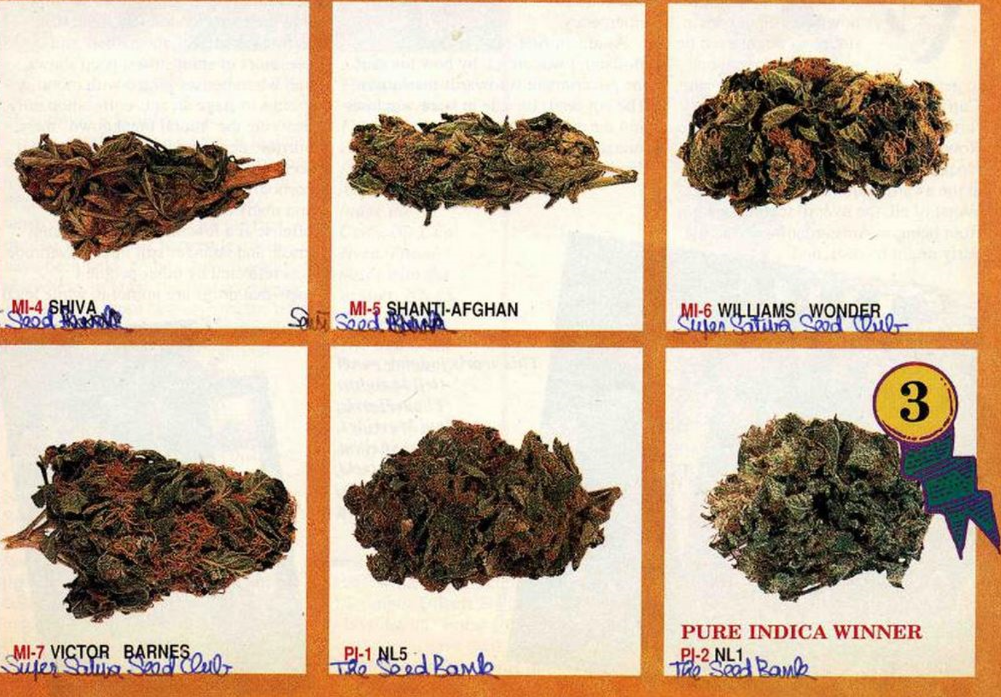
Conclusion
Although thus was a period in which steps were taken regarding the normalisation and legalisation of cannabis, at a legal level things continued as in the previous decade. The appearance of drugs such as crack and heroin was an ace in the hole that many authorities knew how to play to convince part of the population that "everything was drugs" and that "drugs were bad." However, at a social level cannabis was gaining acceptance step by step, no longer thanks to the underground world but to artists, musicians and top-level personalities from different fields.
Undoubtedly, the main changes at this time occurred at the level of genetic development in Holland, a country that became the Shangri-La of all stoners worldwide. And of all breeders, of course! The existing bridge between Europe and the US led to the development of new and powerful hybrids on both sides of the pond, and trials in indoor cultivation (especially as far as flowering plants are concerned) were becoming more and more successful... everything was lined up for what would happen during the following decade: the indoor grow revolution... but we will look at that in another article. Until then,
Happy smoking and vaping!
--------------------------
References:
- Legalizing marijuana and the new science of weed, American Chemical Society
- The Problem with the Current High Potency THC Marijuana from the Perspective of an Addiction Psychiatrist, Elizabeth Stuyt
- A History of the Drug War, Drug Policy Alliance

































